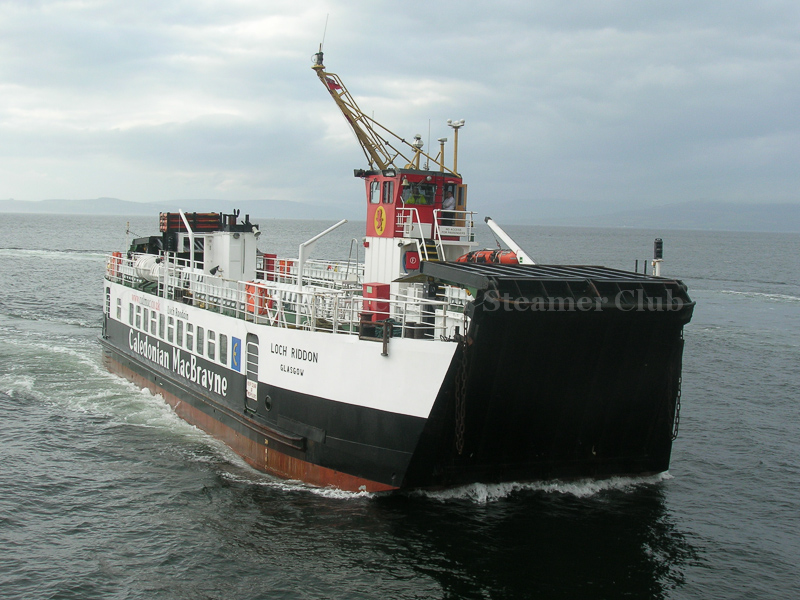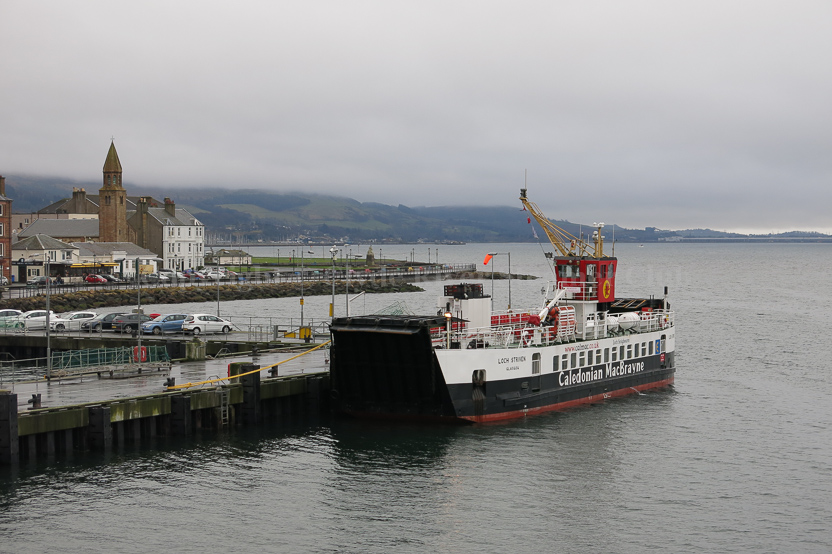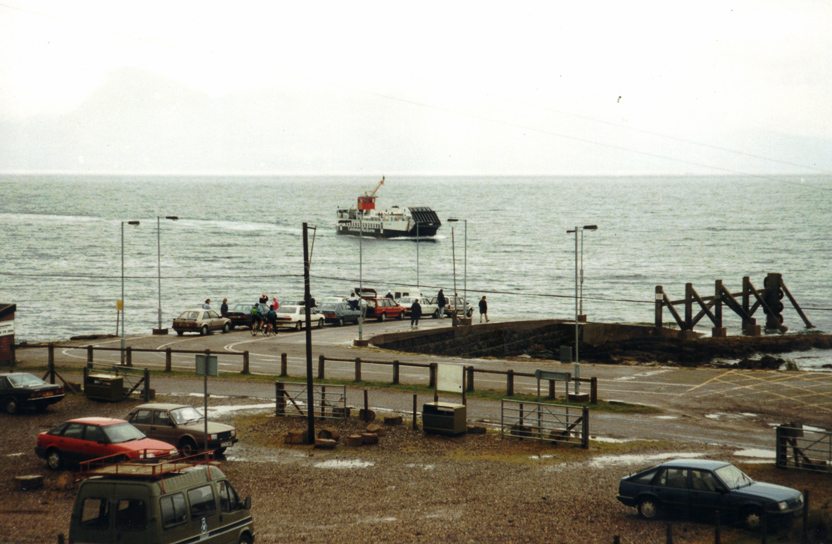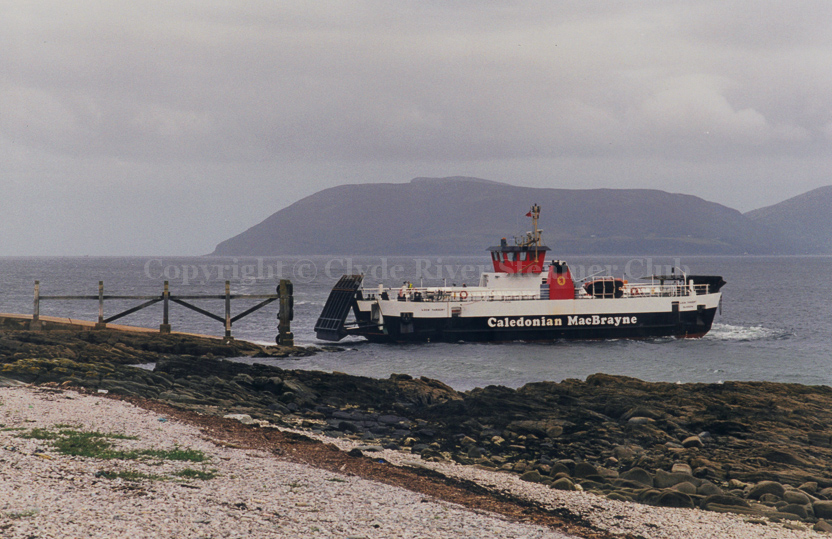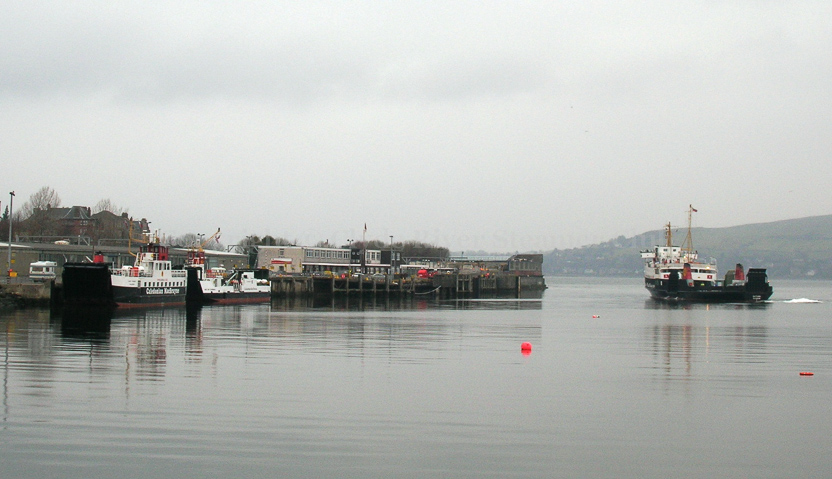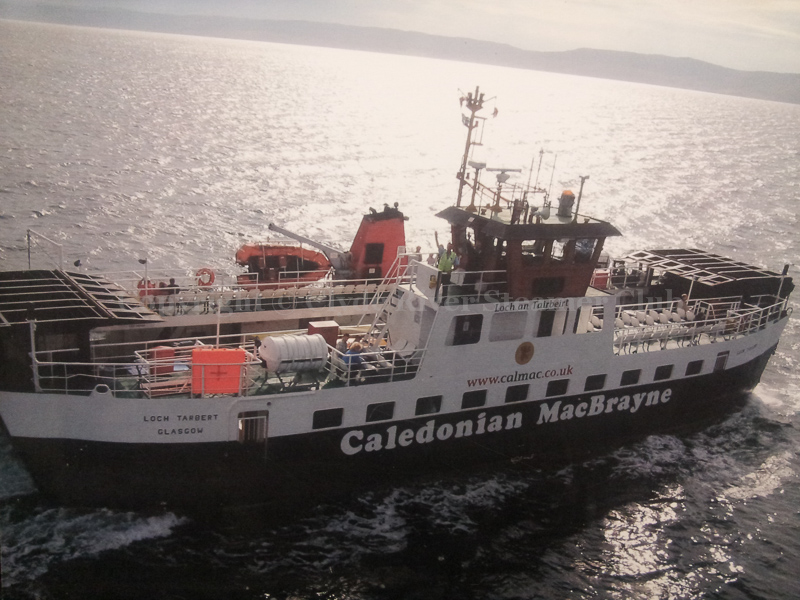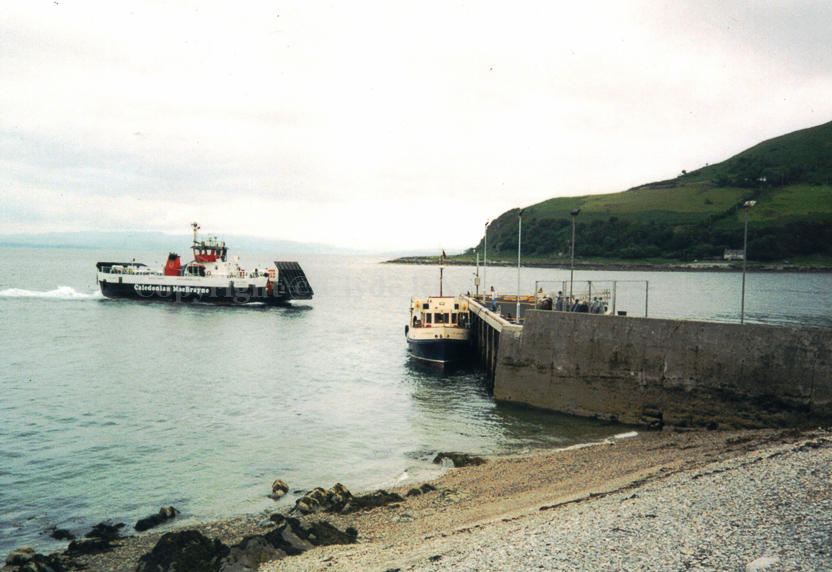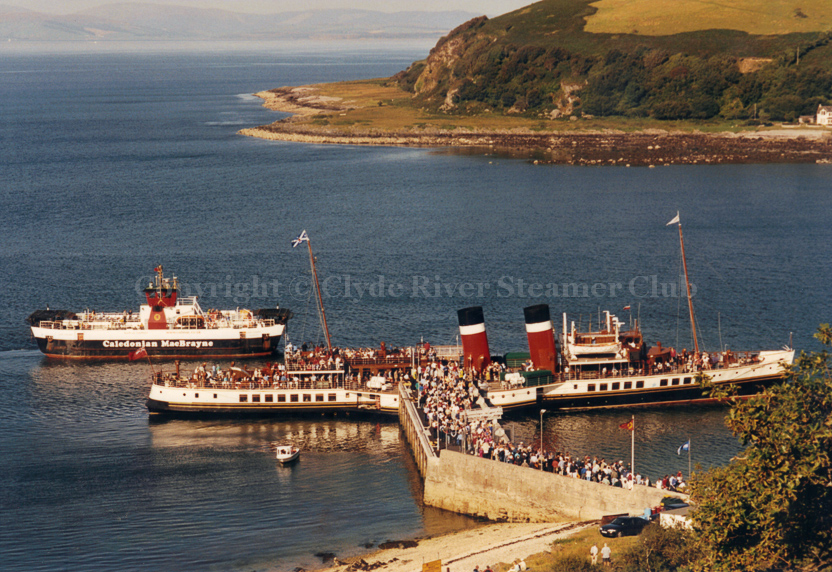Donald McKelvie began his CalMac career 25 years ago as a deck-hand on the Lochranza-Claonaig crossing. Now he helps to induct fellow skippers on the company’s new ‘hybrid’ ferries
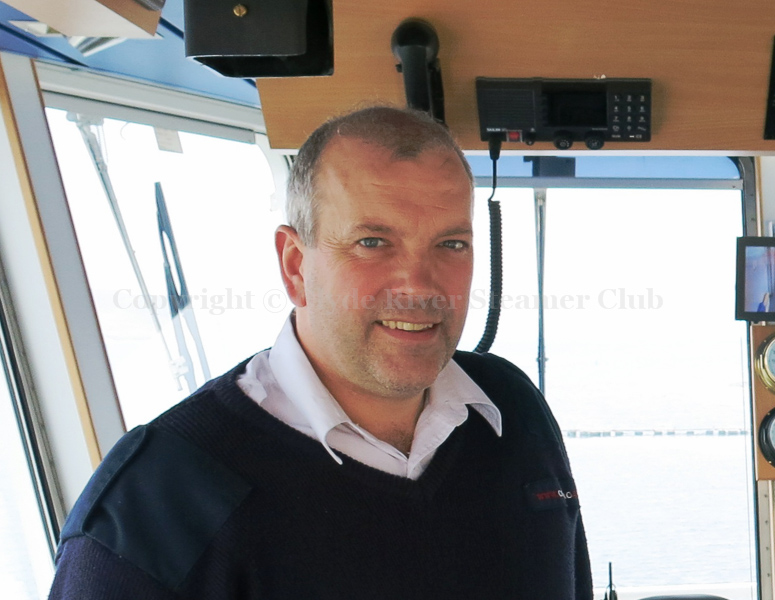
Pointing to an impressive array of dials on the bridge of Hallaig, Donald McKelvie makes the operation of CalMac’s first ‘hybrid’ ferry seem elementary. “Basically, you go as easily as you can and make the batteries last as long as you can,” he says, turning the vessel gently to port on the mid-afternoon crossing from Raasay.
The use of battery power to supplement conventional diesel propulsion is as simple as its benefits to the environment are clear. But balancing these two sources of energy in CalMac’s latest ‘Loch’ class ferries places new demands on skippers. Donald McKelvie, 46, was among the first to get his hands on the controls. He is now instructing others in the techniques, modalities and capabilities of the new ferries, of which Hallaig is the prototype. A second ‘hybrid’ ferry, Lochinvar, recently took up the Tarbert-Portavadie crossing.
 |
 |
 |
|
Donald McKelvie explains
Hallaig’s bridge controls
|
Hallaig was the first of the new
‘hybrid’ ferries to enter service
|
The isle of Raasay offers a distant backdrop
to Hallaig’s bridge deck
|
From the comfort of Hallaig’s bridge, perched high above his surroundings, Donald has every opportunity to admire a panorama stretching from the Cuillins of Skye and the Sound of Raasay to the mainland peaks further east. But his attention is understandably fixed on the approaches to Sconser slipway, and on the levers that lower the ramp and moderate the ferry’s speed.
A veteran of the Lochranza-Claonaig crossing on the Clyde, where he is usually to be found when not delivering ‘Loch’ class ferries to and from the Western Isles, Donald sees the new ‘hybrid’ technology as a test of ingenuity. Putting his finger on a touch-screen in front of him, he points to the various options for utilising battery and generator power.
“What you aim for is the most economical [combination],” he says. “At night the batteries get charged up and in the morning you press the computer button labelled ‘combination sea mode’. You put in how many runs you have to do that day, and the vessel automatically works everything out for you — how much battery power you will need while minimising generator use and fuel consumption. Generally speaking, if you were to use battery alone, you could sail for three-to-four hours. On a Sunday on the Raasay run, if the weather is good, that translates into two or three runs using battery only.”
 |
 |
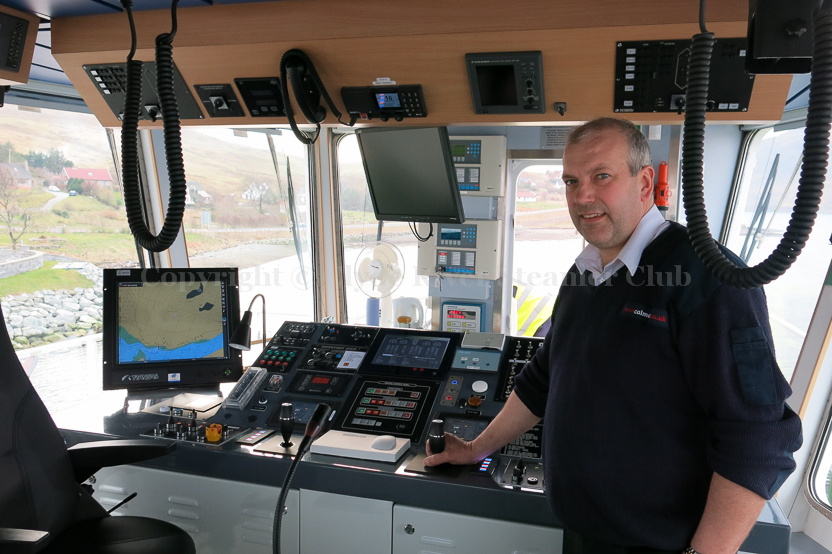 |
|
Despite Hallaig’s pioneering propulsion machinery,
tickets are sold the old-fashioned way
|
Hallaig approaches
the slipway at Sconser
|
The ‘joystick’ combines propulsion
and steering controls
|
Each ‘hybrid’ ferry has three generators, only one of which is generally in use. As soon as the batteries go below 20 per cent of their power, the second generator will kick in. If they run really low or a crossing is made in poor weather, all three generators may be needed. Three buttons — RPM1, RPM2 and RPM3 — give the skipper a flexible menu for powering the vessel. RPM1 gives more direct control over the Voith Schneider unit: it is used mostly on approach to the slipway. RPM2 and 3 produce more power, the latter giving a speed of up to 10 ½ knots.
The button marked ‘combination sea mode’ is designed for use on the journey itself: there is a slight delay in the response, making it less suitable for manoeuvring. “The beauty of these new boats is the lack of vibration and noise,” says Donald — a verdict based on his experience of skippering all ‘Loch’ class ferries except Loch Portain.
 |
 |
 |
|
|
Lochinvar fitting out at Fergusons,
Port Glasgow, in July 2013
|
Loch Bhrusda at Largs
|
Lochbuie at Iona
|
Isle of Cumbrae’s steering wheels
|
The pool of CalMac employees who are qualified to run the two new ferries is still quite small, so some of Donald’s time in coming months will be spent captaining Lochinvar on the Tarbert-Portavadie run. After inducting a couple more skippers, he will join long-time friend and fellow skipper Duncan McGougan for Loch Bhrusda’s upcoming spell on the Small Isles run, while Lochnevis is overhauled.
Donald is one of a small number of skippers entrusted with delivery voyages round the Mull of Kintyre — “not a nice place to be in the middle of winter. Even on a good day it can be pretty bad. If the wind gets up you can get wind-against-tide, and there are five tides meeting at the Mull. You have to know your stuff and plan your voyage. If things get really bad, you take refuge at Campbeltown or Kennacraig.”
He says the trickiest ‘Loch’ class run is Iona-Fionnphort, not so much for the tidal currents as for the tying up at night in winter. Lochbuie, the Iona ferry, moors in the Bull Hole, a sheltered space on the Mull side. Negotiating the narrow entrance on dark winter nights, the skipper has to rely on radar and reflective markers on either side, picked out by spotlights. Other ferries in the CalMac network tie up at more conventional berths. Even the Barra-Eriskay ferry has “a good set-up, though it’ll be off [due to bad weather] more than most.”
Do ‘Loch’ class ferries handle differently from each other, as the ‘Maids’ and ‘streakers’ reputedly did? Donald says Loch Bhrusda is trickier to handle than the others — largely because of the jet-drive characteristics of her Schottel propulsion units, which were installed to help her negotiate the shallow waters of the Sound of Harris, her original route.
“You’ve got to be thinking ahead far more than on a conventional joystick-controlled ferry. With all the other boats the revs stay at 1,650 all day, but when manoeuvring Loch Bhrusda, you have to work your revs up and down along with the steering controls. Her D-shaped steering controls turn faster on the bridge than under the hull — the response is delayed, not instant. It makes her difficult to handle in poor weather.”
Otherwise all ‘Loch’ class ferries handle “pretty much the same, except that Loch Linnhe, Loch Ranza, Loch Riddon and Loch Striven are steered with wheels, with a separate lever for propulsion. It’s the same on Isle of Cumbrae, Lochbuie, Loch Dunvegan and Loch Fyne. You’re working the wheels all the time, which can put a repetitive strain on the hands. The joystick [introduced by Loch Tarbert in 1992 and fitted to all subsequent ‘Loch’ class ferries] combines the two functions and gives better control.”
One other significant difference between the various ‘Loch’ class ferries is tonnage. The smallest four are 209 tons, the Loch Shira 1,200 tons, with the rest somewhere in between. “You need to remember this when you’re manoeuvring, because with a bigger ship you’re managing a bigger weight: it takes more to stop it. That involves thinking ahead a wee bit.”
Despite the flexible propulsion units on ‘Loch’ class ferries, Donald remains fond of the ‘Island’ class, of which only Eigg and Raasay remain in CalMac hands. “It’s nice to go back occasionally to them for that old-fashioned way of steering a boat. You have two engines working separately, each coupled to a conventional screw, so you can put one forward and one astern. That’s why they spin so quickly. But they have nothing up at the bow — there’s no bow thrust.”
On Donald’s ‘home’ run, from Lochranza to Claonaig, Loch Tarbert generally sails with a crew of four, giving her a passenger capacity of 143. With three of a crew, the limit is 75. The Marine and Coastguard Agency makes the calculation according to the number of people the vessel can seat.
It was on the crossing from north Arran to Kintyre that Donald, born and raised at Corriegills near Brodick, began his CalMac career in 1990 — as seaman-purser on Loch Ranza. The working day was longer then than it is now, because the vessel tied up for the night at a mooring in the bay. With a last run from Claonaig at 8.10pm, reaching Lochranza half an hour later, it could be well past 9pm before the crew climbed into the 13-foot clinker-built dinghy to come ashore.
“Come October, there were some poor nights — we got swamped three times [in the dinghy] while coming ashore before the new pier was built. That made a big difference from the safety point of view. If we couldn’t tie up at the mooring, the skipper Jackie Wallace would sail to Brodick and we’d leave the next morning at 4am to get back to Lochranza in time.”
Then, as now, the career-path followed by most crew on ‘Loch’ class ferries was from seaman-purser to motorman and then skipper. Donald sat for his boatmaster’s licence in 1995-6 — on Loch Dunvegan at Kyle-Kyleakin, with classes in Kyle of Lochalsh (these have since moved to Dunstaffnage near Oban). That gave Donald the authority to relieve the skipper for his meal break and generally “get into the swing of things. Later the MCA decided we needed the ‘officer of the watch’ ticket. Standards are going up all the time: earlier this year I sat my ‘master’s 500 near-coastal’ ticket, which you now need to shift ferries [up and down the west coast]. You also need a Tier One Level Two boatmaster’s ticket, which required a good lot of extra study.”
Such qualifications, covering safety of life at sea, voyage planning, risk assessment and discharge of oil and rubbish, are essential if CalMac is to get its MCA ‘document of compliance’, proving it has systems in place to cover every eventuality.
Donald still spends much of the summer on the Lochranza-Claonaig run, allowing him to go home each night: his wife Faith runs Carrick Lodge Guest House at Brodick, and they have four children aged between six and 14.
Kilbrannan Sound hardly qualifies as a busy shipping lane — apart from fishing boats and yachts, passing traffic is confined to timber coasters heading for Ardrishaig and Portavadie — but it gets its fair share of weather-related disruptions. The Claonaig slipway is “the most exposed in the network — completely open to southerly gales and easterly and south-easterly winds. Lochranza used to be exposed to the north-west, but now that we’ve got the pier to protect the slipway, it’s much easier. The construction company listened to us — they were going to build it straight out, which wouldn’t have worked. It now points in a more northerly direction, and lets us lie there in any wind.”
Until quite recently one of the quirks of the run was the loading of six-wheeler coaches. “You had to watch you were not left high and dry by the ebb-tide because of the time it took to load them, and the tow-bar at the back would stick into the slipway. Buses have become so big, with huge overhangs, that we no longer take six-wheelers [on the Lochranza-Claonaig run]: they have to stick to Ardrossan-Brodick, or the coach company has to send a four-wheeler.”
One other quirk of the run is the reaction of prospective passengers at Lochranza when sailings are cancelled, despite conditions on the Arran side seeming quite calm. “They get frustrated, because you’ve nothing to show them. But experience tells you it’s not the same on the other side.”
The Lochranza-Claonaig crossing nevertheless ranks as “one of the most pleasant” alongside Tayinloan-Gigha. “Gigha is so peaceful — it’s idyllic in summer, because there are no lorries or buses on the island.”
There speaks a man who knows: few CalMac employees have a more encyclopaedic knowledge of the territory covered by the versatile ‘Loch’ class. Over the years Donald McKelvie has made many friends up and down the west coast, and it’s easy to see why. No one wears his experience more lightly.
Donald McKelvie was talking to CRSC magazine editor Andrew Clark in August 2014.
Sign up for CRSC membership here and further your interest in British coastal shipping.















